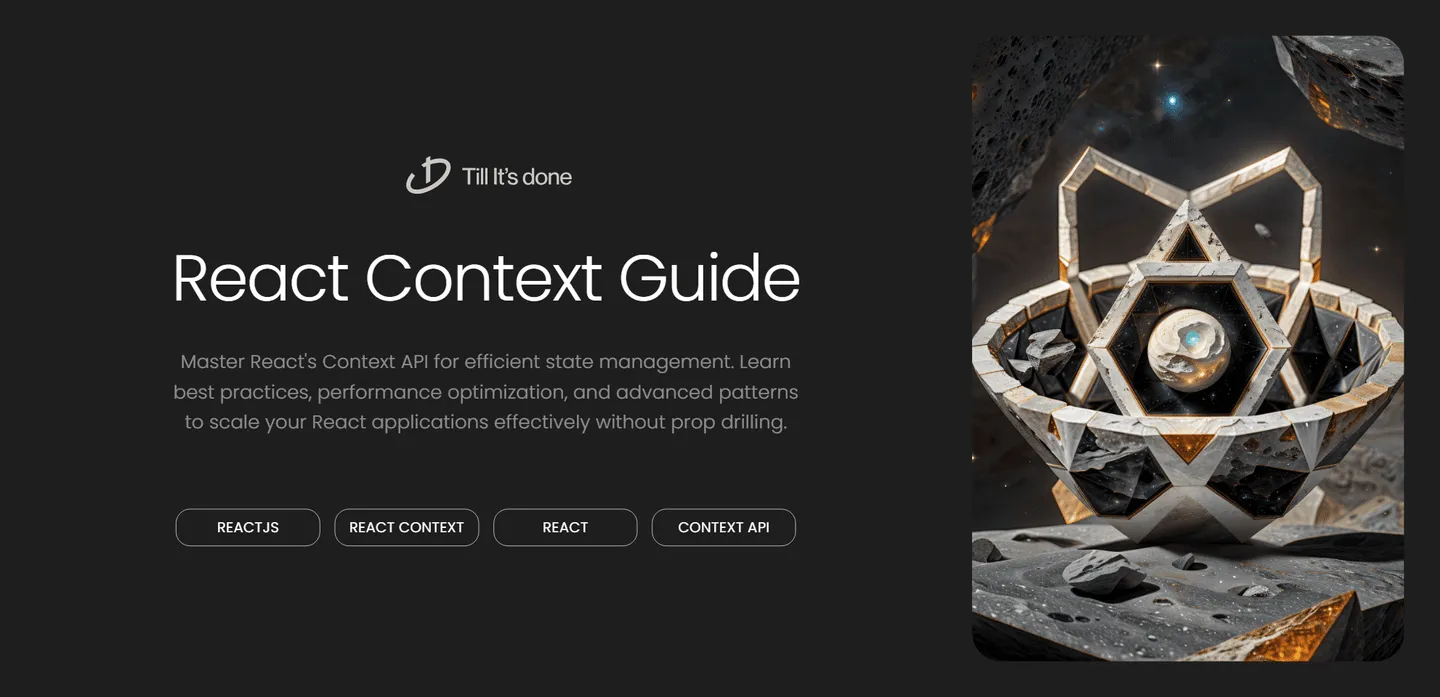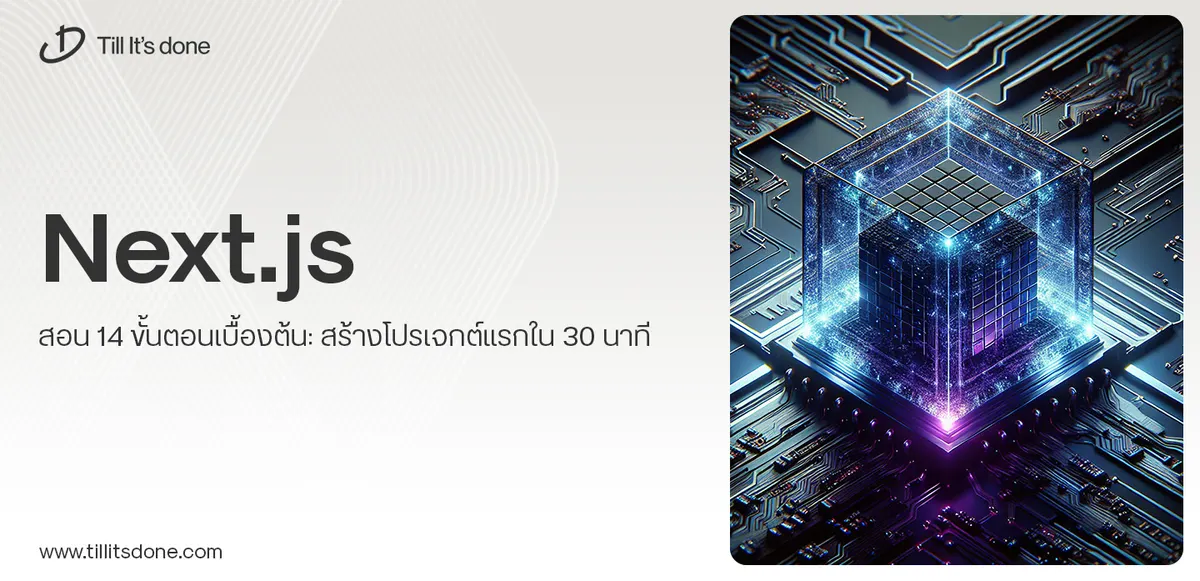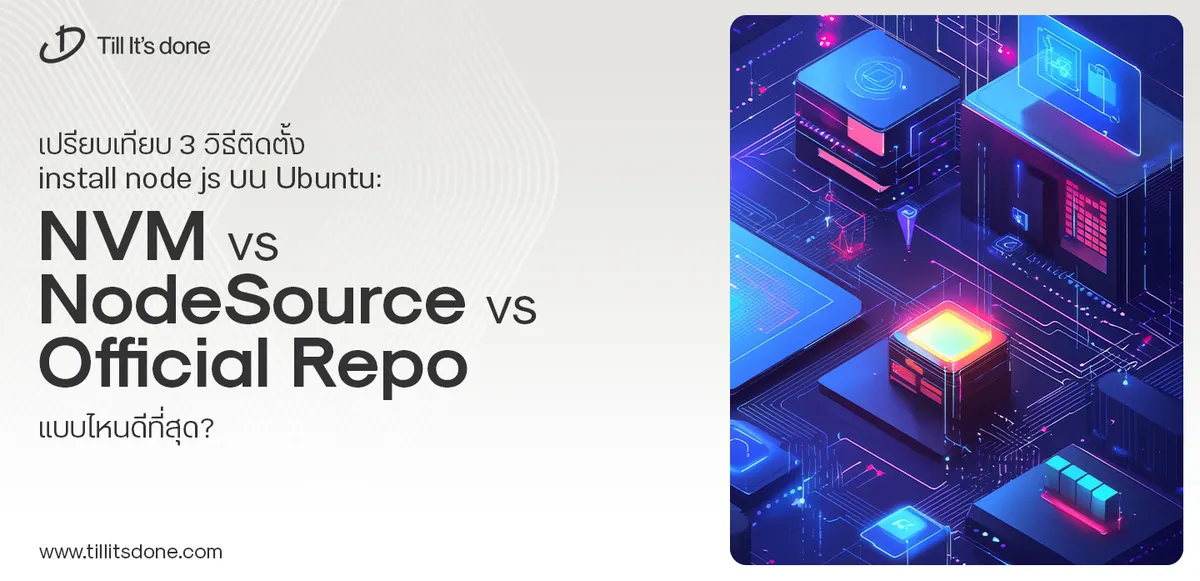- Services
- Case Studies
- Technologies
- NextJs development
- Flutter development
- NodeJs development
- ReactJs development
- About
- Contact
- Tools
- Blogs
- FAQ
Scaling Your React App with Context API
Learn best practices, performance optimization, and advanced patterns to scale your React applications effectively without prop drilling.

![]()
Scaling Your React App with Context API: A Modern Approach to State Management
As React applications grow larger and more complex, managing state effectively becomes increasingly crucial. While props drilling served us well in smaller applications, it can quickly become unwieldy as your component tree expands. Enter React Context API – a powerful built-in solution that elegantly solves this challenge.
Why Context API?
Think of Context API as a broadcast system for your React components. Instead of passing props through multiple layers of components (props drilling), Context API creates a direct channel between a provider (the broadcaster) and any consuming components (the receivers), regardless of their position in the component tree.
![]()
Setting Up Context API
The setup process is remarkably straightforward. Let’s break it down into digestible steps:
- Create a Context
- Set up a Provider
- Consume the Context
Here’s the interesting part – Context API isn’t just for simple state management. It’s a versatile tool that can handle complex state scenarios, including:
- User authentication state
- Theme preferences
- Language settings
- Shopping cart data
- Application configurations
Best Practices for Scaling
When scaling your application with Context API, consider these proven strategies:
1. Separate Contexts for Different Concerns
Instead of cramming everything into one massive context, create smaller, focused contexts. This approach improves maintainability and reduces unnecessary re-renders.
2. Optimize Performance
Context API is powerful, but it needs to be used thoughtfully. Every context update triggers a re-render of all consuming components. To optimize performance:
- Keep context values as small as possible
- Use multiple contexts instead of one large context
- Implement memoization where appropriate
![]()
3. Strategic Context Placement
Place your context providers as close as possible to the consuming components. This reduces the scope of context updates and improves application performance.
Advanced Patterns
As your application scales, you might want to explore some advanced patterns:
- Combining Context with useReducer for complex state logic
- Creating custom hooks that wrap context consumption
- Implementing context composition for modular state management
When to Use Context API vs Other Solutions
While Context API is powerful, it’s not always the best choice. Use Context API when:
- You need to share state across many components
- The state updates are infrequent
- You want to avoid prop drilling
- Your state management needs are relatively simple
Consider alternatives like Redux or MobX when:
- You need sophisticated state management features
- Performance is a critical concern with frequent updates
- You require robust debugging tools
- Your state logic is highly complex
![]()
Conclusion
Context API represents a powerful tool in the React ecosystem for scaling applications effectively. When used correctly, it simplifies state management while maintaining clean, maintainable code. Remember, the key to success lies in understanding both its strengths and limitations, then applying it strategically within your application architecture.
By following these best practices and patterns, you’ll be well-equipped to scale your React applications efficiently using Context API, creating more maintainable and performant applications that can grow alongside your business needs.
 สร้างเว็บไซต์ 1 เว็บ ต้องใช้งบเท่าไหร่? เจาะลึกทุกองค์ประกอบ website development cost อยากสร้างเว็บไซต์แต่ไม่มั่นใจในเรื่องของงบประมาณ อ่านสรุปเจาะลึกตั้งแต่ดีไซน์, ฟังก์ชัน และการดูแล พร้อมตัวอย่างงบจริงจาก Till it’s done ที่แผนชัด งบไม่บานปลายแน่นอน
สร้างเว็บไซต์ 1 เว็บ ต้องใช้งบเท่าไหร่? เจาะลึกทุกองค์ประกอบ website development cost อยากสร้างเว็บไซต์แต่ไม่มั่นใจในเรื่องของงบประมาณ อ่านสรุปเจาะลึกตั้งแต่ดีไซน์, ฟังก์ชัน และการดูแล พร้อมตัวอย่างงบจริงจาก Till it’s done ที่แผนชัด งบไม่บานปลายแน่นอน  Next.js สอน 14 ขั้นตอนเบื้องต้น: สร้างโปรเจกต์แรกใน 30 นาที เริ่มต้นกับ Next.js ใน 14 ขั้นตอนเพียงแค่ 30 นาที พร้อม SSR/SSG และ API Routes ด้วยตัวอย่างโค้ดง่าย ๆ อ่านต่อเพื่อสร้างโปรเจ็กต์แรกได้ทันทีที่นี่
Next.js สอน 14 ขั้นตอนเบื้องต้น: สร้างโปรเจกต์แรกใน 30 นาที เริ่มต้นกับ Next.js ใน 14 ขั้นตอนเพียงแค่ 30 นาที พร้อม SSR/SSG และ API Routes ด้วยตัวอย่างโค้ดง่าย ๆ อ่านต่อเพื่อสร้างโปรเจ็กต์แรกได้ทันทีที่นี่  วิธีสมัคร Apple Developer Account เพื่อนำแอปขึ้น App Store ทีละขั้นตอน อยากปล่อยแอปบน App Store ระดับโลก มาอ่านคู่มือสมัคร Apple Developer Account พร้อมเคล็ดลับ TestFlight และวิธีอัปโหลดที่ง่ายในบทความเดียวนี้ได้เลย
วิธีสมัคร Apple Developer Account เพื่อนำแอปขึ้น App Store ทีละขั้นตอน อยากปล่อยแอปบน App Store ระดับโลก มาอ่านคู่มือสมัคร Apple Developer Account พร้อมเคล็ดลับ TestFlight และวิธีอัปโหลดที่ง่ายในบทความเดียวนี้ได้เลย  TypeScript Interface คืออะไร? อธิบายพร้อมวิธีใช้และข้อแตกต่างจาก Type เรียนรู้วิธีใช้ TypeScript Interface เพื่อสร้างโครงสร้างข้อมูลที่ปลอดภัยและเข้าใจง่าย พร้อมเปรียบเทียบข้อดีข้อแตกต่างกับ Type ที่คุณต้องรู้ ถูกรวมเอาไว้ในบทความนี้แล้ว
TypeScript Interface คืออะไร? อธิบายพร้อมวิธีใช้และข้อแตกต่างจาก Type เรียนรู้วิธีใช้ TypeScript Interface เพื่อสร้างโครงสร้างข้อมูลที่ปลอดภัยและเข้าใจง่าย พร้อมเปรียบเทียบข้อดีข้อแตกต่างกับ Type ที่คุณต้องรู้ ถูกรวมเอาไว้ในบทความนี้แล้ว  Material-UI (MUI) คืออะไร อยากสร้าง UI สวยงามและเป็นมืออาชีพในเวลาอันรวดเร็วใช่ไหม มาทำความรู้จักกับ Material-UI (MUI) ที่ช่วยให้คุณพัฒนาแอปพลิเคชันบน React ได้ง่ายและดูดีในทุกอุปกรณ์
Material-UI (MUI) คืออะไร อยากสร้าง UI สวยงามและเป็นมืออาชีพในเวลาอันรวดเร็วใช่ไหม มาทำความรู้จักกับ Material-UI (MUI) ที่ช่วยให้คุณพัฒนาแอปพลิเคชันบน React ได้ง่ายและดูดีในทุกอุปกรณ์  เปรียบเทียบ 3 วิธีติดตั้ง install node js บน Ubuntu: NVM vs NodeSource vs Official Repo แบบไหนดีที่สุด? เรียนรู้วิธีติดตั้ง Node.js บน Ubuntu ด้วย NVM, NodeSource หรือ Official Repo เลือกวิธีที่เหมาะกับความต้องการของคุณ พร้อมเปรียบเทียบ เพื่อการพัฒนาที่มีประสิทธิภาพ!
เปรียบเทียบ 3 วิธีติดตั้ง install node js บน Ubuntu: NVM vs NodeSource vs Official Repo แบบไหนดีที่สุด? เรียนรู้วิธีติดตั้ง Node.js บน Ubuntu ด้วย NVM, NodeSource หรือ Official Repo เลือกวิธีที่เหมาะกับความต้องการของคุณ พร้อมเปรียบเทียบ เพื่อการพัฒนาที่มีประสิทธิภาพ! Talk with CEO
We'll be right here with you every step of the way.
We'll be here, prepared to commence this promising collaboration.
Whether you're curious about features, warranties, or shopping policies, we provide comprehensive answers to assist you.


